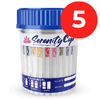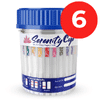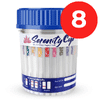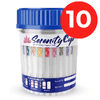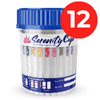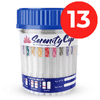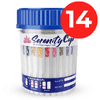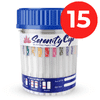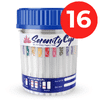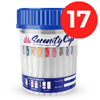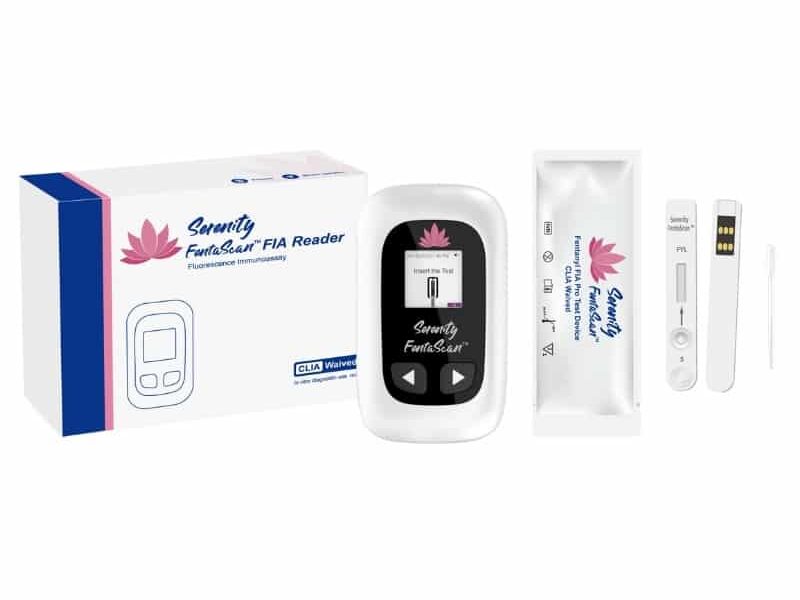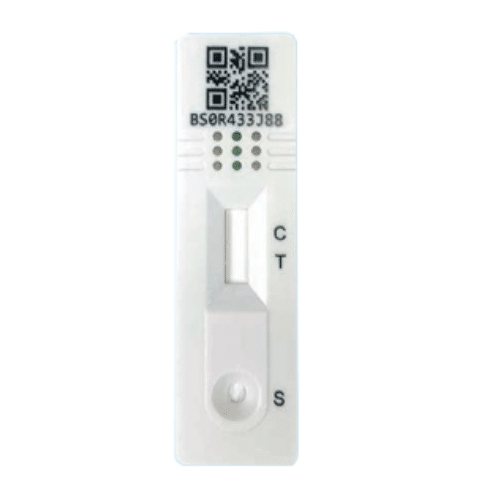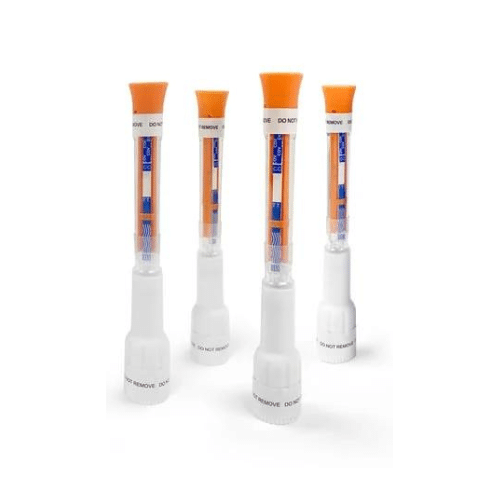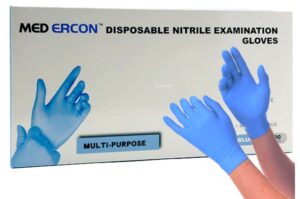
What is Nicotine?
There are over 4,000 chemicals found in tobacco products and nicotine is one of them. Nicotiana tabacum, the type found in tobacco plants, is a naturally occurring colorless liquid chemical that directly acts on the brain. When burned, this chemical turns brown and emits the odor of tobacco. As an alkaloid, nitrogen-containing chemical, nicotine may be synthetically produced.
It is easily absorbed through the mucosal lining of the mouth and nose and skin. It goes to the lungs through inhalation, which is the quickest way for the drug to reach the brain, activating the “reward pathways” and thereby increasing the dopamine levels.
It will only take 10 seconds of cigarette inhalation to reach peak levels of this drug, and quickly dissipating causing the user to continue to smoke throughout the day.
Drug Testing For Nicotine
It is not an illegal substance, however, there are Drug Tests available that are used when screening for this substance. One of which is a Cotinine Drug Test. Cotinine is a chemical that is made in the human body after exposure to nicotine. Are employers screening their workers?
Not usually. Some specialized fields have established their own policy regarding non-smoking, however, it is not usually indicated on a standard Panel Drug Test. Can an employer legally refuse an applicant who is a smoker? Information from chron.com states:
“Employers also cannot discriminate based on personal characteristics such as weight, marital status or disability. However, there is no federal law declaring smokers as a protected class. In addition, some states offer no legal protection for smokers, allowing employers to establish any kind of anti-smoking restriction or policy they want without the fear of a discrimination claim.”
Nicotine Transmission
Screening Cut-Off and Detection Time
It must be understood that tobacco is not the only source of nicotine. This chemical is naturally found in nightshade plants such as eggplants, tomatoes, potatoes, green peppers, and coca plant leaves.
It is metabolized into cotinine once it enters the bloodstream and slowly mixes with the blood. Nicotine is easily and quickly absorbed by the human body and taking quite a while to rid of. It is detectable in the blood from 1-3 days after using it. Using urine testing, it is detectable in the urine for up to 4 days. For heavy users, it may take 2-3 weeks before completely disappearing from the user’s system.
Nicotine is addictive and can be toxic if taken in high doses. However, it is not a controlled substance under the US Controlled Substance Act. As early as 1964, the US Surgeon General stated that smoking is linked to heart disease and lung cancer. Nevertheless, it wasn’t until 1994 that the US Food and Drug Administration supported the issue that it is addictive.
In connection, the US Supreme Court ruled that the FDA has no right to regulate it as a drug. In 2009, the Family Smoking Prevention and Tobacco Control Act gave the FDA the authority to control the manufacture and trade of tobacco.
What Type of Drug is Nicotine?
Nicotine, found in cigarettes, cigars, snuff, pipe tobacco, and chewing tobacco, is highly addictive. It is easily absorbed in the bloodstream when the tobacco product is smoked, inhaled, or chewed. it stimulates the adrenal glands to release epinephrine or adrenaline.
Epinephrine increases respiration, blood pressure and heart rate as this hormone stimulates the central nervous system. it is similar to heroin and cocaine in the sense that all three chemicals increase the levels of the neurotransmitter dopamine, thus affecting the reward and pleasure of brain pathways.
Forms and Routes of Administration
Nicotine is available in various products that connictain tobacco. Such products contain different levels of it but no amount is too little to render this substance harmless.
-
- Cigarette, Cigar, Cigarillos – These products are smoked and only a fraction of the nicotine content is directly inhaled as most of the smoke goes off at the side as one puff. Toxicity is somewhat limited since the effects of inhaled nicotine happen within seconds. If ingested, nicotine toxicity may develop.
- Chewing Tobacco – Also known as smokeless tobacco, nicotine in this product is absorbed through the mouth. Snuff is ground tobacco in sachets. The nicotine content of 34g of smokeless tobacco is about 236 mg, whereas a pack of cigarettes has 24 mg of nicotine.
- Nicotine Gum –This nicotine product is used as an aid to stop smoking. The gum contains a minute amount of nicotine and raises the concentration of nicotine in the body at a slower pace than smoking a cigarette.
The Nicotine Patch
Nicotine patches contain a sizeable amount of the substance in order to facilitate a continuous delivery for hours. Severe toxicity may happen if the patch is ingested.
E-cigarettes – Also called e-liquid or e-juice, e-cigarettes are a battery-powered device that vaporizes liquid nicotine. The concentrated nicotine is sometimes flavored and packaged in a 30 ml to 4 liters container
Dissolvable Tobacco – This is a fairly new tobacco product that comes in sticks, strips, compressed tobacco, and orbs. They look like candies, spit-free and smoke-free.
Hookah – This is a device made of pipe, a water bowl, and a hose used to smoke a combination of vegetable/fruit and tobacco (shisha). The tobacco is heated using charcoal or a Bunsen burner to deliver about 100-200 times the volume of inhaled smoke from a cigarette.
Tobacco Brand Names
There are hundreds of cigarettes, cigars, and other tobacco product brand names. Below are the top cigarettes, cigars, and smokeless tobaccos.
-
- Cigarette Brands
- Marlboro
- Newport
- Camel
- Pall Mall Box
- Pyramid
- Cigar Brands
- Swisher Little
- Swisher Sweets
- Black & Mild
- White Owl
- Dutch Masters
- Winchester
- Smokeless Tobacco
- Levi Garrett Plug
- Day’s Work
- Red Man Plug
- Grizzly
- Garrett
- Skoal
- Red Man
Nicotine Uses
In the past, low doses of nicotine were used to treat a variety of ailments from migraine to intestinal symptoms. A high dose of nicotine is lethal in that it has been used as an insecticide. Studies indicate that there are many possible medical uses for the highly stigmatized nicotine.
Pharmaceutical drugs with nicotine as their primary ingredients were developed for clinical trials in the treatment of depression, schizophrenia, depression, Alzheimer’s disease, ADHD, anxiety, Tourette syndrome, and other disorders.
It has been observed that people with schizophrenia, adult ADHD, and depressive–spectrum disorders tend to smoke heavily, prompting researchers that nicotine seems to soothe or diminish symptoms.
Nicotine also tends to improve the motor and cognitive functioning in people with Parkinson’s disease and Alzheimer’s disease. The theory is that nicotine increases the release of neurotransmitters diminished in those two diseases.
Studies are underway to determine the efficacy of nicotine as a pain reliever and postoperative analgesia.
Currently, nicotine is now being used as an aid in smoking cessation called nicotine replacement therapy or NRT. The premise of this therapy is to lessen the craving for therapy and provide relief from withdrawal symptoms when a person is trying to quit or cut down on smoking.
Special Conditions
Smoking is linked to cancer, lung diseases, heart diseases, heart attack, vascular disease, emphysema, chronic bronchitis, and aneurysm. The habit has also been linked to pneumonia, cataracts, and leukemia.
When taken for medicinal purposes, the prescribing doctor must know if the patient has:
-
- Stomach ulcer
- Heart disease
- Diabetes
- Untreated high blood pressure
- History of seizures
- Food allergies
A person on a low salt diet or using another smoking cessation medication is advised not to take nicotine gum or lozenges. People diagnosed with phenylketonuria cannot use nicotine gum or lozenges as they contain phenylalanine.
Street Names for Tobacco
-
- Ciggies
- Smokes
- Stags
- Stogies
- Stokes
- Tabs
- Snouts
- Cigs
- Chew
- Dip
- Snuff
- Split tobacco
Nicotine Side Effects
Smokers know that tobacco use is harmful and most have the desire to quit or reduce using it. The truth is that out of the 35 million who wish to stop smoking each year, about 85% of them relapsed within a week.
The effects of smoking are serious as it can potentially harm all organs of the body.
-
- Autoimmune System
- Type 2 diabetes
- Rheumatoid Arthritis
- Crohn’s Disease
- Heart
- Stroke
- Aneurysm
- Heart disease
- The buildup of plaque in the arteries
- Heart attack
- Peripheral and arterial disease
- Blood
- Thickened blood vessels
- Blood chemistry changes
- Increased blood pressure
- Vision
- Optic nerve damage
- Macular degeneration
- Blindness
- Bones
- Bone loss
- Osteoporosis
- Lungs
- Pneumonia
- Emphysema
- Chronic bronchitis
- Asthma
- Chronic obstructive pulmonary disease
- Tuberculosis
- Reproductive System
- Stillbirth
- Preterm birth
- Orofacial clefts
- Ectopic pregnancy
- Erectile dysfunction
- nausea or vomiting
- mouth sores, blisters, or irritation
- sore throat
- belching
- acid or sour stomach
- dizziness
- heartburn
- mouth, tooth, jaw, or neck pain
- problems with teeth
- unusual tiredness or weakness
- diarrhea
- hiccups
Nicotine Addiction
Tobacco dependence or nicotine dependence simply means a person cannot stop using nicotine products even if he knows it’s harmful to him and those around him.
The substance produces not only physical effects but mood-altering changes in the brain that is pleasurable. The pleasure affected by using tobacco may prod the person to dependence. This drug affects the brain by:
-
- reducing depression
- boosting mood
- producing a sense of well-being
- reducing irritability
- enhancing short-term memory and concentration
- reducing appetite
Symptoms of Use and Abuse
It is easy enough to know if a person smokes. His clothes, hair, hands, and breath will usually smell like cigarettes. He might have a persistent cough that won’t go away. People who chew tobacco spits a lot, while those who use a flavored e-cigarette would probably smell sweet and fruity.
Withdrawal symptoms appear when a tobacco user stops its use. Symptoms may appear 30 minutes after the last hit. Some of the more common symptoms are:
-
- headaches
- tingling in the hands and feet
- nausea and intestinal cramping
- coughing, sore throat
- difficulty concentrating
- irritability
- intense cravings for the drug
- sweating
- anxiety
- insomnia
- weight gain
- depression
Stopping smoking can improve one’s health no matter how long the person has used tobacco products.
History of Tobacco
Nicotine was isolated from Nicotiana tabacum in 1828 and was first synthesized by P. Crepieux and A. Pictet in 1904. However, the history of this drug dates back more than 2,000 years.
Native to the Americas, the tobacco plant has been used for medicinal and recreational purposes. Ancient carvings depicted Mayan priests enjoying a pipe of tobacco and have used the plant in sacred and healing rituals. Spanish conquistadors and travelers introduced tobacco for use in cigars and pipes.
In 1560 French ambassador Jean Nicot de Villemain sent tobacco and seeds from Brazil to Paris believing that tobacco had medicinal value. Nicotiana tabacum which is the Latin name for the tobacco plant was derived from his name Nicot.
He sent powdered tobacco to Queen Catherine de Medici for her to sniff the snuff to cure her migraines. The Queen of France said the snuff worked and called it the Herba Regina, or herb of the queen.
The new Spanish colonies in North America became the prime supplier of tobacco leaves in the 1600s. The demand was so great that by the 1700s, slave trade between North America and Africa prospered as more plantation workers were needed in North America. Thus, the proliferation of tobacco was virtually unstoppable as local economies prospered with the trade.
In 1763, nicotine was used as an insecticide. In 1828, German chemist Karl Ludwig Reinmann and Dr. Wilhelm Heinrich Posselt isolated nicotine from the tobacco plant. Both scientists deemed it poisonous.
The ill-effects of tobacco consumption were recognized that by 1890, several US states banned the sale of cigarettes to minors. Today, nicotine comes in a variety of products.

